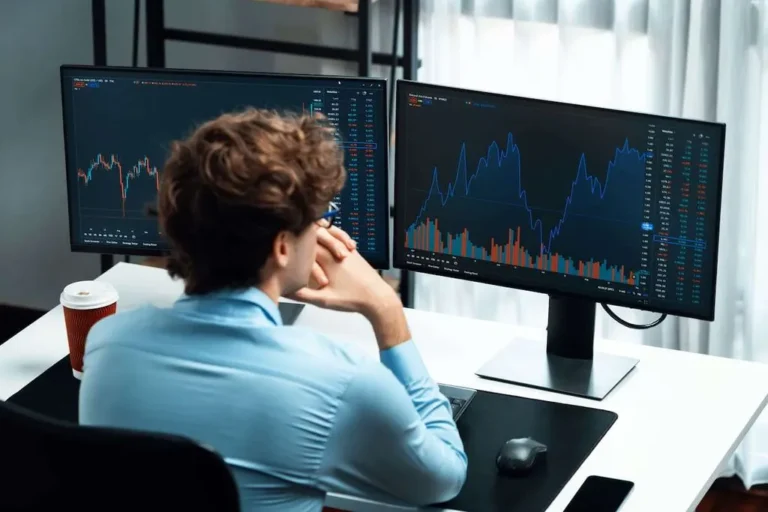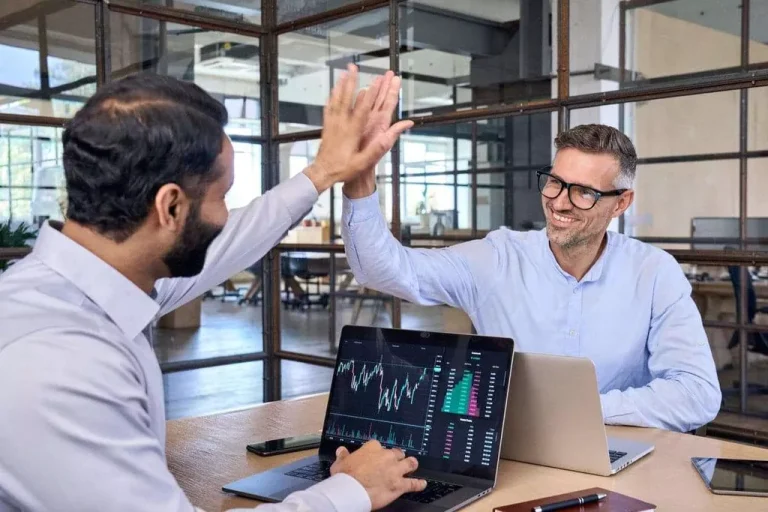What are Real World Assets RWAs? Learn about crypto and DeFi Get Started with Bitcoin com
Content
You must note that real-world assets could be physical or digital with intrinsic value outside the blockchain and crypto ecosystem. You can welcome these assets into the blockchain and crypto landscape through tokenization. Tokenization helps in creating a digital twin of real world assets crypto the assets on a blockchain, thereby making them useful for new opportunities in trading, investment and ownership. Real-world asset tokens are digital representations of tangible assets like real estate, art, commodities, or intellectual property on a blockchain or similar technology. These tokens enable fractional ownership, making high-value assets more accessible by dividing them into more affordable units. RWA tokens represent a share of ownership in real-world assets such as property, gold or other physical and financial assets.

What is Real-World Asset (RWA) Tokenization?
Crypto can seem disconnected from the tangible economic activities and assets that underpin traditional financial systems. StUSDT is another popular example of RWA in DeFi with a contribution of more than $1.4 billion in TVL. It works as a money market fund solution where users can stake USDT on the platform to earn passive income. The most interesting highlight of stUSDT is the RWA DAO that manages user asset investments. Real-world assets (RWAs) have become one of blockchain’s most interesting use cases by putting real value on Proof of work chain.
What is the difference between a crypto exchange and a brokerage?
You can lend them out, borrow against them, or even help provide liquidity on other platforms. To facilitate this digital transformation, different blockchains have developed their own standards for creating tokens[1]. RWA projects often launch their own utility token, which is used as a https://www.xcritical.com/ governance token, to allow users to have a direct say on the project’s future direction. It is possible to invest directly in almost all major RWA projects through utility tokens. Blockchain can provide a transparent system for registering and transferring IP rights, which helps reduce disputes and simplifies licensing processes. BlackRock, the world’s largest asset manager, aims to tokenize $10 trillion of its assets, indicating a trend that could redefine how people interact with crypto and pave the way for a surge in the tokenization of RWAs.
TMAI 2025 Roadmap: Shaping the Future of Crypto AI
This typically involves third-party auditors who assess and verify the smart contract code used to tokenize the asset, the asset’s attributes, and its legal standings. This transformation is not just a technical undertaking but also involves a regulatory process to ensure the tokens accurately and legally represent ownership of real-world assets. Algorand’s Pure Proof-of-Stake (PPoS) consensus mechanism ensures decentralized security and fast transaction finality without the energy-hungry processes typical of Proof-of-Work systems. This results in transaction confirmations within seconds and ultra-low fees, creating the ideal environment for RWA tokenization and trading.
This transformation offers multiple benefits, such as enhanced liquidity, reduced transaction costs, and fractional ownership. The growth of cryptocurrencies like Bitcoin, Ether, and a wide array of stablecoins has proven that investors see unique benefits in blockchain-based digital assets. Now, many in both the crypto world and mainstream finance are working to bring those benefits to traditional assets, in an emerging sub-field of digital assets called asset tokenization.
The banking giant was one of the early leaders in applying blockchain tech to traditional financial activities, executing over $1.5 trillion of transactions since its inception. The deal will allow token-based financing of DAMAC’s wide range of portfolio companies that includes real estate development, hospitality and data centers. Artists, writers, and inventors can issue digital tokens representing shares in future revenues generated from their works. Platforms like ANote Music allow investors to bid on shares of music catalog royalties. They’re giving regular folks a shot at owning a piece of something big, like real estate or art.

Meanwhile, AML is about stopping money laundering, and that’s even harder on a blockchain, where money can jump around the globe in seconds. A major challenge is figuring out what exactly a token is – is it a currency, a stock, or something completely different? This matters a lot because different rules apply to various financial products. Getting this wrong can have serious consequences for a project and its investors.
- As you can see, real-world assets crypto present exciting possibilities for investors seeking diversification, enhanced liquidity, and the potential for higher returns.
- They serve crucial roles in cross-border payments and as banking infrastructure for the unbanked.
- For instance, the custody of a physical object must be done legally and reliably.
- As of March 2024, according to data on DefiLlama, Swarm enjoys a TVL of over $5.4 million.
- Instead of relying solely on overcollateralized assets, they’ve built a platform backed by a diversified portfolio of real-world assets.
- RWAs provide a novel method for incorporating tangible assets into digital financial systems.
Untangled Finance’s mission is to bridge the traditional financial world with the decentralized blockchain realm by tokenizing real-world assets, thus increasing accessibility and liquidity in the financial markets. The OM token is used as a governance and utility token within the Mantra Chain, enabling staking for passive yield earning and participation in governance decisions across various products. Mantra’s innovative approach is designed to address the scalability challenges of RWA tokenization, setting a foundation for a global financial ecosystem shift. The platform is set to streamline asset transactions, open new investment avenues, foster entrepreneurship, and attract global investment. Tokenization, the process of converting real-world assets into digital tokens on blockchain networks, has gained prominence in the crypto market.
These companies play a crucial role in enhancing transparency and efficiency by providing a centralized hub for organized data related to tokenized assets. Currently fiat-backed stablecoins dominate the RWA market and hold a substantial 96% share. Six of the top ten tokenized assets fall under this category, with notable issuers like Tether and Circle using the U.S. dollar to mint stablecoins that facilitate cryptocurrency transactions and payments. However, stablecoin holders don’t earn returns from the underlying assets (fiat USD) which must be held safely to maintain the stablecoin peg. Maple Finance provides different lending pools for institutional investors including corporate treasuries, credit funds and individuals with high net worth. The most appealing value proposition of the platform is the facility of unsecured loans to corporate institutions.
It is very important to note that the demand for RWAs amongst institutional players is growing very strongly. RWAs are designed to tokenize and integrate real assets into the DeFi ecosystem. They include tokenization of capital gains from credit lines, corporate borrowing and lending, income-based financing, mortgages, and other similar assets. RWAs provide a novel method for incorporating tangible assets into digital financial systems.
To power this system, they created the TRAC token, an ERC-20 token that fuels the OriginTrail network. This token is essential for verifying data, accessing information, and participating in the platform. By holding TRAC, users contribute to the network’s growth and can potentially earn rewards.
With over $380 million in managed assets and nearly 30% monthly growth, BUIDL currently stands as the largest RWA tokenized fund of its kind. Real estate is one of the most promising and frequently discussed examples of an asset that can benefit from tokenization, which is why we’ve used it for so many of our examples throughout this article. Real estate transactions often require a combination of money up front and substantial loans since the purchases are typically quite large. By tokenizing real estate assets, investors can buy or sell shares in individual properties much more easily, in more granular sizes and with less need for intermediaries. Securitize is one of our best case studies showcasing one of our examples of real world asset crypto projects, tokenizing real world stocks and bonds with the help of blockchain technology. Moreover, recent researches says that no matter which “state” of market we would experience, the tokenization of real world assets will gain potential.
Securitize was founded in 2017 and has become a prominent name in the security token industry. This move amplifies the potential for broader adoption and innovation within the RWA tokenization field. To purchase real-world assets in crypto, start by creating an account on a platform dedicated to tokenized assets. For added security, consider using a hardware wallet like the Ledger Nano X to safeguard your tokens. This device provides an extra layer of protection against potential cyber threats.
Sure, there are still some hurdles to jump over, like figuring out how to keep prices stable and making sure everyone can easily buy and sell these tokens. Meaning, you need to take extra steps like legal paperwork and independent valuations to confirm the asset’s legitimacy. It’s like buying a house – just because you have a deed doesn’t guarantee you own the property. You have to make sure the house actually exists and that you’re the rightful owner.
Reliable and secure custody solutions are a must-have to ensure safe asset storage. Smart contracts and blockchain networks should be robust enough to withstand attacks, and measures such as code audits and bug bounties help to reduce issues with vulnerabilities or software faults. The long-term benefits for the global markets will depend on the extent of adoption and network effects. Custodians are vital in Real World Asset (RWA) tokenization, safeguarding and managing digital and physical assets. As trusted entities, custodians ensure the security of tokenized assets, fostering confidence among investors.